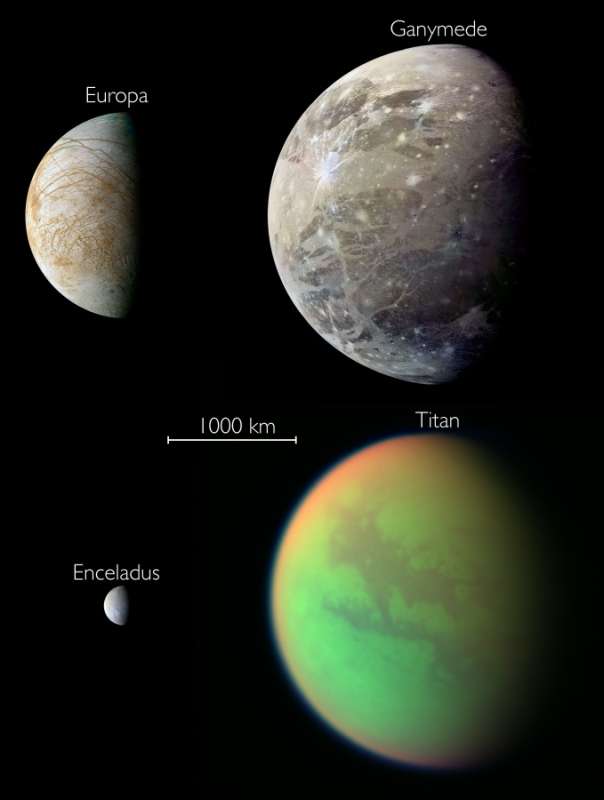
|
Credit & Copyright: Research and compilation -
René Heller
(McMaster Univ.) et al.
Panels - NASA/JPL/Space Science Institute/Ted Stryk
Explanation:
For astrobiologists,
these may be the four most
tantalizing moons in our Solar System.
Shown at the same scale, their exploration by interplanetary
spacecraft has launched the idea that moons, not just
planets, could have environments supporting life.
The Galileo mission to Jupiter discovered
Europa's global subsurface ocean of liquid water
and indications of
Ganymede's
interior seas.
At Saturn, the Cassini probe detected erupting fountains of water ice
from Enceladus indicating warmer subsurface water on
even that small moon, while finding surface lakes
of frigid but still liquid hydrocarbons beneath the dense atmosphere
of large moon Titan.
Now looking beyond the Solar System,
new
research suggests that sizable exomoons,
could actually outnumber
exoplanets in stellar
habitable zones.
That would make moons the most common type of habitable world
in the Universe.
Panels - NASA/JPL/Space Science Institute/Ted Stryk
|
January February March April May June July August September October November December |
| ||||||||||||||||||||||||||||||||||||||||||||||||
NASA Web Site Statements, Warnings, and Disclaimers
NASA Official: Jay Norris. Specific rights apply.
A service of: LHEA at NASA / GSFC
& Michigan Tech. U.
Based on Astronomy Picture
Of the Day
Publications with keywords: Europa - Enceladus - Ganymede - Titan
Publications with words: Europa - Enceladus - Ganymede - Titan
See also:
- APOD: 2025 October 12 Á All the Water on Europa
- APOD: 2025 December 14 Á Juno Flyby of Ganymede and Jupiter
- APOD: 2025 June 10 Á Enceladus in True Color
- Titan: Moon over Saturn
- APOD: 2025 January 19 Á Titan Touchdown: Huygens Descent Movie
- APOD: 2024 August 25 Á Fresh Tiger Stripes on Saturns Enceladus
- Galileo s Europa
